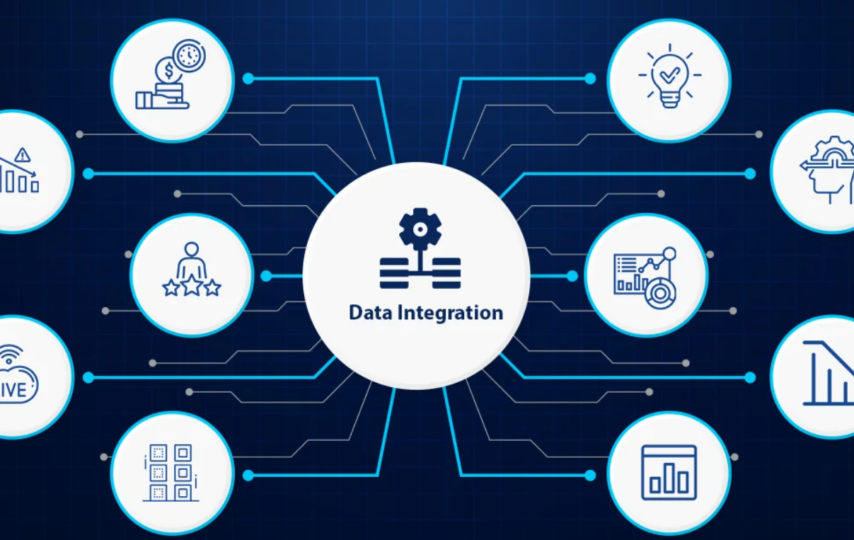Enterprises rely on seamless data integration to unlock actionable insights, improve their decision-making, and drive innovation. However, with multiple data integration approaches available, it can be difficult to determine the best one. The most common approaches are ETL, ELT, Data Virtualization, and CDC.
In this article, we explore and compare various data integration methods, shedding light on their strengths, weaknesses, and potential applications.
- Extract, Transform, Load (ETL) – The Classic Approach
The Extract, Transform, Load (ETL) method has long been the backbone of data integration for organizations across various industries. It is a well-established and widely adopted approach that plays a crucial role in aggregating, cleaning, and consolidating data from diverse sources into a central repository. Let’s delve deeper into its benefits and considerations.
Pros:
- ETL provides a comprehensive and systematic approach to data integration, enabling organizations to combine data from various sources, regardless of differences in format, structure, or location.
- ETL is well-suited for batch processing scenarios, where data is extracted, transformed, and loaded in regular intervals. This is ideal for historical data analysis, periodic reporting, and scenarios where real-time data is not critical.
- There is a wide range of ETL tools available in the market, offering user-friendly interfaces and pre-built connectors for data sources and destinations. These tools simplify the implementation and management of ETL workflows, reducing the need for complex coding and manual scripting.
Cons:
- As ETL processes typically run at scheduled intervals, there can be some latency in data availability.
- Implementing ETL workflows may demand substantial IT resources, hardware, and infrastructure investment.
- ETL is primarily designed for structured data integration. It may face challenges in handling unstructured or semi-structured data, such as text documents, images, audio, or video files.
- Extract, Load, Transform (ELT)
Extract, Load, Transform (ELT) is an alternative data integration approach that offers a unique perspective on handling data compared to the traditional ETL approach. ELT reverses the order of ETL:
- Extraction: Data is extracted from source systems and loaded into the target environment, often a cloud-based data lake or data warehouse.
- Loading: Raw data is loaded without immediate transformation.
- Transformation: Data transformation and processing occur in the target environment.
Pros:
- Leverages cloud scalability and cost-effectiveness. ELT uses the processing capabilities of modern data platforms, which are designed to handle massive volumes of data with speed and efficiency.
- ELT’s data loading and transformation capabilities, along with modern data platforms, facilitate real-time and near real-time data integration. This is particularly valuable in scenarios where real-time data insights are critical for business decision-making and actionable intelligence.
- As data volumes grow and data becomes more complex, ELT provides a future-proof data integration approach that can handle the increasing demands of data-driven organizations.
Cons:
- While ELT simplifies the data loading process, the complexity of data transformations is shifted to the target data repository. Performing transformations within the data repository might require specialized knowledge of the platform and its tools.
- As ELT loads raw data without extensive upfront transformations, it might lead to a lack of data governance and data quality control.
- ELT can potentially introduce security and compliance risks when loading raw data into the target data repository. Organizations need to implement robust data access controls, encryption measures, and data anonymization techniques to ensure data security and compliance with industry regulations.
- Data Virtualization
Data Virtualization is an agile and modern data integration approach that offers distinct advantages for organizations dealing with complex data environments. Unlike traditional data integration methods like ETL and ELT, Data Virtualization doesn’t require physically moving or replicating data. Instead, it creates a virtual layer that allows users to access and query data from many sources in real-time without the need for data movement.
Pros:
- Data Virtualization enables real-time access to data from multiple sources, providing users with up-to-date information for making timely and informed decisions.
- By eliminating the need for data replication and storage, Data Virtualization can lead to cost savings in terms of infrastructure and maintenance.
- Data Virtualization encourages data collaboration among teams and departments, fostering better communication and alignment across the organization.
Cons:
- Performance may be affected in high-concurrency environments. Data Virtualization may introduce some performance overhead due to the need to query multiple data sources in real-time.
- Implementing Data Virtualization can be complex, especially when integrating a large number of diverse data sources.
- While Data Virtualization enhances data governance, organizations need to ensure the virtualization layer is secure to prevent unauthorized access to sensitive data.
- Change Data Capture (CDC)
Change Data Capture (CDC) is a data integration approach that focuses on capturing and processing real-time data changes from source systems and propagating those changes to target systems in near-real-time. This method enables organizations to maintain an up-to-date and synchronized view of their data across various applications, databases, and analytics platforms.
Pros:
- CDC ensures that any data changes made in the source systems are immediately captured and propagated to the target systems, allowing for real-time data synchronization.
- Reduces processing overhead by focusing on incremental data changes. CDC operates with minimal impact on source systems, as it captures only the changes that occur, rather than scanning entire datasets.
- CDC simplifies data integration by providing a continuous flow of data changes from source to target systems.
Cons:
- Requires careful handling of data consistency and data loss in case of failures. Implementing CDC can be more complex than traditional batch-oriented approaches. It requires careful planning, configuration, and coordination.
- While CDC minimizes the impact on source systems compared to full data extraction, continuous data capture may still impose some overhead, particularly in high-transaction environments.
- Real-time data integration through CDC raises data security concerns, especially during data transmission.
Choosing the Right Data Integration Approach
When considering data integration, selecting the appropriate approach is critical to achieving seamless data flow, optimal performance, and successful integration outcomes. Each data integration approach – ETL (Extract, Transform, Load), ELT (Extract, Load, Transform), Data Virtualization, and Change Data Capture (CDC) – has its strengths and weaknesses. Understanding the unique requirements and characteristics of your organization will guide you in choosing the right data integration approach.
- Data Volume and Complexity:
- ETL: ETL is well-suited for handling large volumes of data and complex data transformations. If your organization deals with extensive data processing needs and requires substantial data transformation before loading it into the target system, ETL might be the ideal choice.
- ELT: ELT is more suitable when data transformations can be efficiently performed within the target system. If your organization’s data processing requirements are straightforward, and the target system has robust data processing capabilities, ELT can be a faster and more straightforward approach.
- Real-Time Data Requirements:
- CDC: If your organization demands real-time data synchronization and immediate access to the most current data, CDC is the preferred choice. CDC offers low-latency data integration, capturing and delivering data changes as they occur, enabling real-time analytics and decision-making.
- ETL/ELT: Traditional ETL and ELT processes, on the other hand, may not support real-time data integration. They are designed for batch-oriented data processing and are more suitable for scenarios where real-time data access is not a primary requirement.
- Source System Impact:
- CDC: CDC minimizes the impact on source systems, capturing only data changes rather than full data extraction. If your organization’s source systems require protection from excessive overhead, CDC can be a favorable option.
- ETL/ELT: ETL and ELT may exert some level of impact on source systems, as they involve data extraction and sometimes transformation processes. Careful consideration should be given to source system performance when using these approaches.
- Integration Complexity:
- Data Virtualization: For organizations looking to simplify data integration efforts and avoid data duplication, data virtualization can be a compelling choice. It allows for real-time data access without the need for data replication or complex data transformations.
- ETL/ELT/CDC: ETL, ELT, and CDC may require more complex implementations, involving multiple data pipelines, transformation rules, and synchronization mechanisms. These approaches are more suitable for scenarios where more extensive data processing and synchronization are necessary.
- Budget and Resources:
- Data Virtualization: Data virtualization often requires less upfront investment in hardware and infrastructure, as it leverages existing data sources and systems. It can be cost-effective for organizations with limited resources.
- ETL/ELT/CDC: Traditional ETL, ELT, and CDC solutions may require dedicated resources and infrastructure to manage and support data integration processes. Organizations should evaluate their budget and resource availability when considering these approaches.
- Scalability and Future Growth:
- ETL/ELT/CDC: ETL, ELT, and CDC are designed to handle large volumes of data and can scale to accommodate future data growth. These approaches are well-suited for organizations with expanding data processing needs.
- Data Virtualization: While data virtualization is scalable, its performance may be influenced by the number of virtualized data sources and the complexity of queries. Organizations anticipating significant data growth should evaluate the scalability of data virtualization solutions.
- Data Security and Compliance:
- All Approaches: Regardless of the data integration approach chosen, data security and compliance should always be top priorities. Organizations must implement robust security measures to protect sensitive information and comply with privacy regulations.
In conclusion, choosing the right data integration approach involves a thorough assessment of your organization’s specific requirements, data processing needs, real-time data demands, and available resources. While each approach offers unique advantages, understanding the strengths and limitations of each will help your organization make an informed decision. Whether it’s ETL, ELT, Data Virtualization, or CDC, selecting the appropriate data integration approach will drive efficient data flow, enhance decision-making, and empower your organization to leverage the full potential of its data assets.








